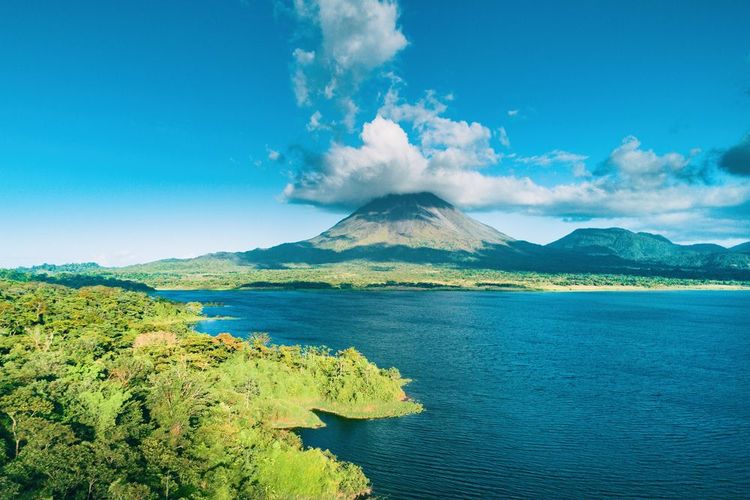The Poàs volcano is located in the province of Alajuela. It lies around 30 km north-west of Costa Rica's capital, San José. The nearest town is Alajuela, around 20 km from the volcano. Volcan Poàs National Park is a fascinating place where nature reigns supreme. It was created in 1971 to protect the active volcano of the same name. Since then, the park has become one of Costa Rica's main tourist attractions, thanks to the dangerous natural beauty of its volcanic landscape.
The Poàs volcano is a natural wonder located in the central region of Costa Rica. This active volcano is surrounded by a lush forest that is home to a wide variety of Costa Rican flora and fauna. At an altitude of 2,708 metres, it is one of the most visited volcanoes in the country, thanks to its proximity to the capital, San José, and its magnificent volcanic landscapes. Poàs has erupted several times throughout its history, most recently in April 2017. Despite this, it remains a must-see for tourists wishing to discover Costa Rica's natural wonders. Travellers can enjoy panoramic views of the volcano's main crater, which measures over 1.5 km in diameter and 300 metres deep. At the bottom of the crater, a steaming acid lake awaits you. In the national park surrounding the volcano, hiking trails abound with breathtaking views of the surrounding rainforest and waterfalls.
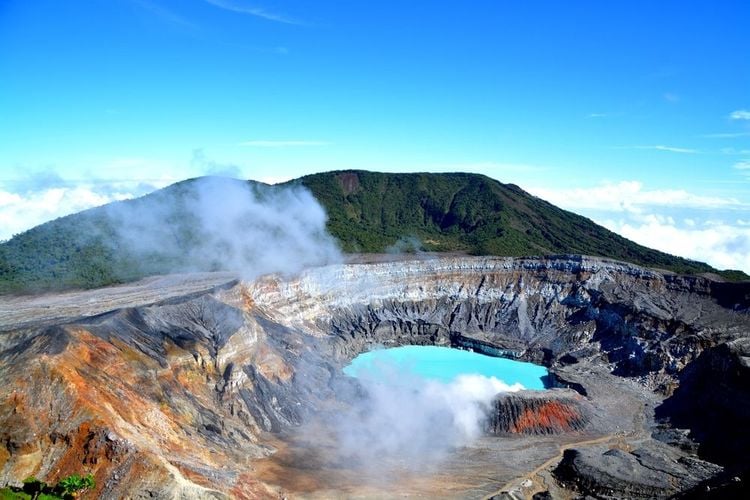
The crater and lake of the Poas volcano in Costa Rica
- © Styve Reineck / ShutterstockA sumptuous national park
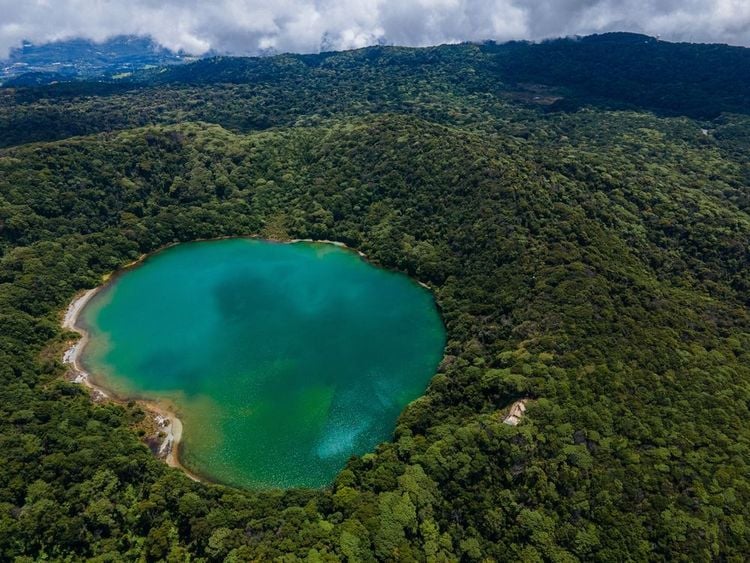
Vue aérienne du parc du volcan Poàs
- © Gianfranco Vivi / ShutterstockVolcan Poàs National Park is also an important conservation area for the region's biodiversity. The cloud forests and their canopies are home to a variety of endemic bird species, including the ruby-throated hummingbird, the trogon and the resplendent quetzal. Hiking trails through this incredible biodiversity offer the chance to hear howler monkeys or meet coatis and tapirs.
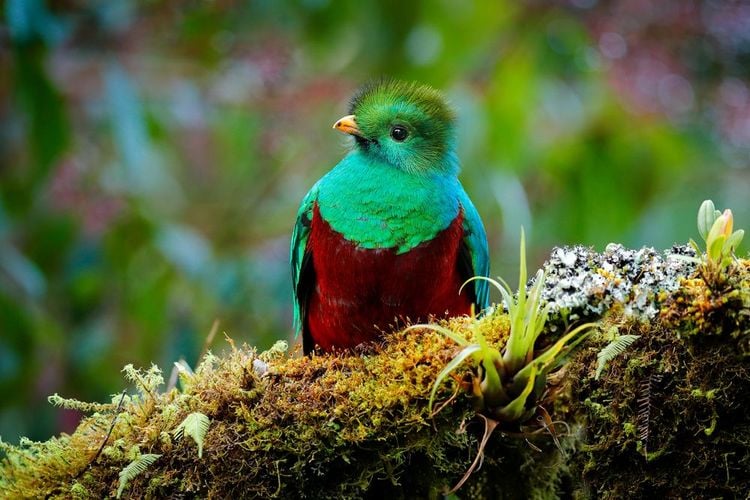
On retrouve beaucoup de Quetzals dans le parc du volcan
- © Ondrej Prosicky / ShutterstockThird largest volcano in the country
The Poàs volcano is an active volcano. It rises to an altitude of 2,708 metres, making it the third highest volcano in the country. Poàs is relatively young for a volcano. It began to form around 1.6 million years ago and became a stratovolcano. Over time, its repeated eruptions created a main crater measuring around 1.5 km in diameter and over 300 metres deep. This crater was then filled with rainwater and underground springs, creating an emerald-green lake that gives off sulphurous and acidic fumes.
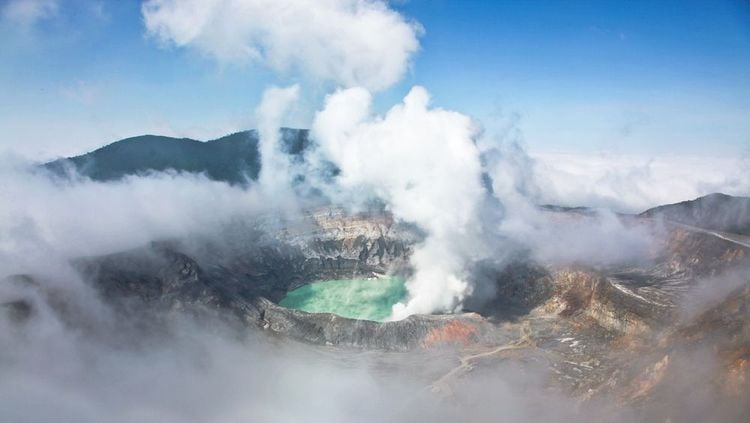
Le volcan Poàs est actif
- © Wollertz / ShutterstockIn recent years, the Poàs volcano has experienced several eruptions, the most recent of which took place in April 2017. During this last one, the main crater ejected ash and rocks very violently, forcing the evacuation of visitors and residents from the area. Since then, the volcano has remained active, with regular gas and ash emissions.
The acid lake
An acid lake is a lake with a pH below 7, which means that it is more acidic than neutral water. Acidic lakes can form naturally, as in the case of the Poàs, but they are often the result of human activity. The Poàs is one of the most acidic lakes in the world, with a pH of between 0.1 and 0.3. It is therefore very important to respect the established safety rules when visiting the national park and its surroundings. The formation of this acid lake is due to the chemical reaction of volcanic gases escaping from the underlying magma and dissolving in the lake's rainwater.

Le lac est un des plus acides du monde
- © Styve Reineck / ShutterstockA magnificent journey for visitors
You can visit the Poàs volcano on your own, without a tour guide. The park offers signposted trails that allow you to discover the main crater lake **, the steaming fumes** escaping from the earth cracks, the hot springs and the surrounding cloud forests. However, it is important to note that the main crater is active and presents safety risks. It is therefore important to follow the safety instructions and respect the prohibited areas. Don't worry, everything is explained at the park entrance.
View the crater from the lookout point
The Poàs volcano lookout is located around 500 metres from the entrance to the National Park. The path leading up to it is an easy and pleasant walk, offering breathtaking views of the main crater and the steaming acid lake. It takes around 15-20 minutes of leisurely walking to reach the lookout point from the park entrance.
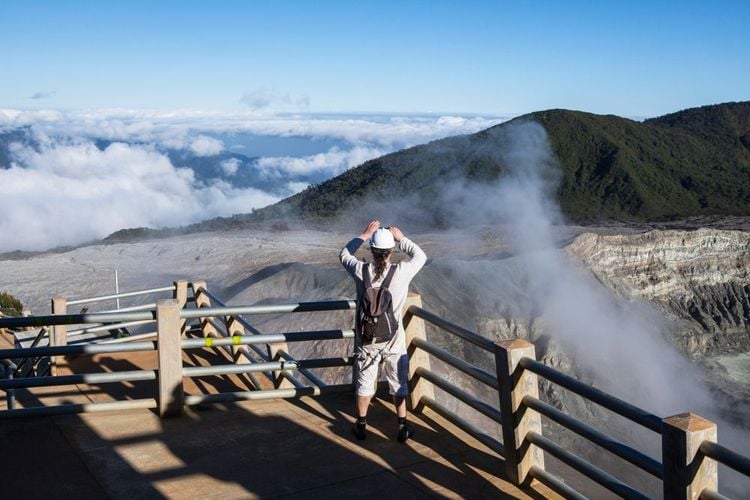
The Poàs volcano lookout
- © JurateBuiviene / ShutterstockGuided tour
For a more enriching and informative experience of the volcano, hiring a local tour guide is a good idea. He or she will share with you interesting information about the geology, fauna and flora of the region, as well as the history, traditions and folklore of Costa Rica in relation to the Poàs volcano.
Practical info
👛 Price: from 101 euros
🕑 Duration of the expedition: 6 hours
⚠️ Beware of the altitude! The national park is located at around 2,700 metres. As such, the air can be thinner and difficult to breathe for some people. If you have health problems or are not used to high altitude, it may take a little longer to reach the lookout. Don't hesitate to take breaks.
Practical information for Poàs volcano
⏰ National park opening times
The national park is open every day from 8am to 3.30pm. However, it may be closed in the event of intense volcanic activity, for example, so it's advisable to check the opening times before setting off on your adventure.
👛 How much does it cost to enter the national park?
To visit the Poàs volcano, you need an entrance ticket. This costs USD15 for non-residents and USD5 for children aged between 2 and 12. The ticket can be purchased at the entrance to the national park.
